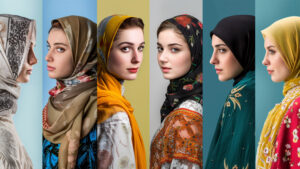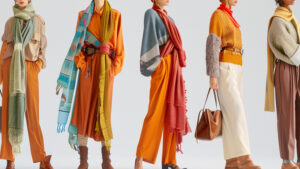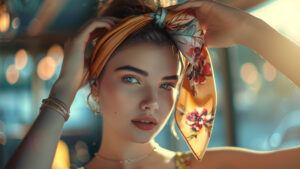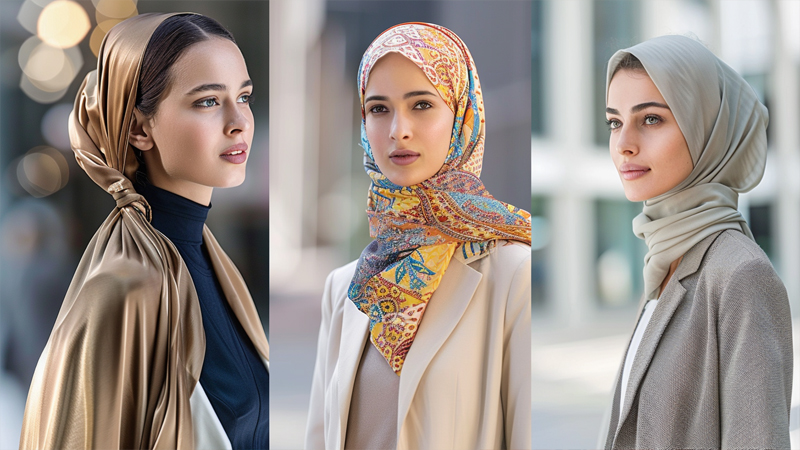
I still remember the day a colorful scarf turned an ordinary outfit into something special. A small twist of fabric can truly brighten life.
Headscarves come in varied shapes—like square or rectangular—and can be pre-tied or DIY. Each design suits different seasons, occasions, and preferences, making headscarf choices both functional and stylish.
Let’s take a closer look at each type and see why they matter.
What distinguishes square headscarves from rectangular ones?
Square scarves drape symmetrically, while rectangular styles offer more length for creative wrapping. Both shapes let me experiment with coverage, layering, and unique tying methods.
Square scarves are typically easier to fold into neat shapes, while rectangular ones provide extra length for more layering and coverage options.
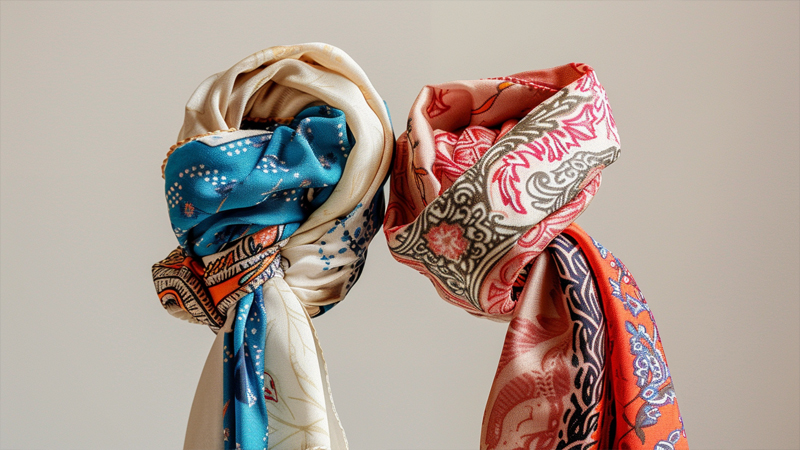
I once tried a floral square scarf1 on a windy day, thinking it would be easier to keep in place. The square shape felt like a gentle hug around my head, symmetrical and snug, so I didn’t worry about the fabric flapping into my face. That experiment taught me how shape matters in more ways than pure style—it also affects comfort and stability.
If you like a neat and compact look, a square scarf might be your best friend. It can be folded into a triangle and tied at the nape of your neck for a sweet, classic vibe. Rectangular scarves, however, can be looped around your shoulders or wrapped into elaborate twists if you’re craving a bold statement. There have been mornings when I needed to cover up a messy hairdo, and an oversized rectangular scarf was my ticket to looking chic without the fuss. I’d drape it around my head, cross the ends under my chin, and then tie them at the back. Easy, breezy, and oh-so-pretty.
Shape, Fit, and Style
- Square: Great for balanced coverage and simple tying.
- Rectangular: Ideal for layering, adding length, and creating dramatic looks.
Sometimes, I even use rectangular scarves2 as a makeshift shawl when the evening turns chilly. It’s amazing how one piece of fabric can serve multiple roles in my daily life. Whether I’m out shopping for groceries or meeting friends for coffee, these shapes help me adapt to the moment. The beauty lies in how both offer a canvas for creativity: you can add a brooch, twist in a ribbon, or layer the scarf over a collared shirt. Each shape has its own charm, so the choice is yours—and depends on how adventurous you feel that day.
What are the benefits of pre-tied headscarves compared to DIY ones?
Pre-tied headscarves save me time, but DIY wraps3 let me customize every fold. Both have pros, depending on whether I’m aiming for ease or total creative control.
Pre-tied options offer quick styling with minimal effort, while DIY wraps let you experiment with countless knots and unique designs.
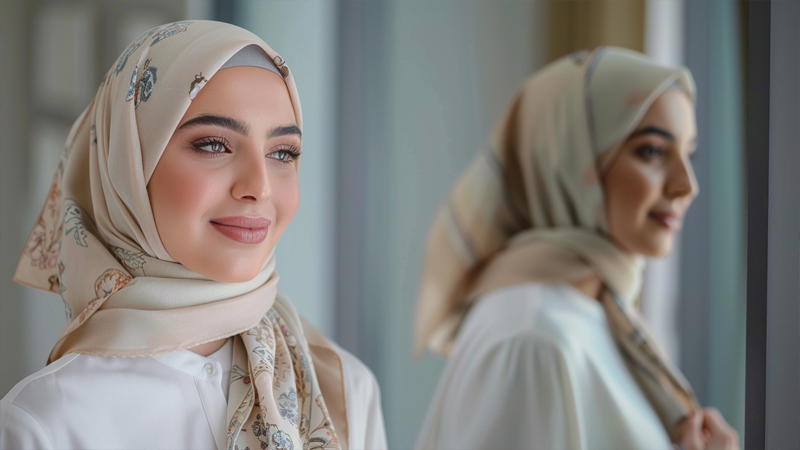
My schedule can be unpredictable, so I really appreciate the convenience of pre-tied scarves4. I remember a day when I was running late for a friend’s brunch. In a rush, I grabbed a pre-tied piece, slipped it on, and was out the door in seconds. It felt secure, looked stylish, and saved me from fumbling with pins or complicated folds. Pre-tied options often have built-in elastic or little hidden clips, so they stay put. That means fewer adjustments throughout the day.
On the flip side, I adore DIY wraps when I’m in a creative mood. The process of folding, twisting, and pinning is like an art project for my hair. Sometimes I’ll take an extra-long scarf with a fun pattern and try different turban knots or side bows, just to see which look resonates with me that morning. It’s a bit like painting—I choose the “canvas” (the scarf), pick a color palette, and let my imagination take over.
Balancing Speed and Self-Expression
- Pre-tied: Quick and fuss-free, ideal for busy mornings or travel.
- DIY: A playground for self-expression, allowing unique ties and layering.
Of course, there’s no rule that says you can’t have both in your closet. Some days call for swift practicality, and other days you want to channel your inner stylist. I find that owning a mix of pre-tied scarves and loose fabrics lets me adapt to any situation, whether it’s a last-minute invitation or a quiet afternoon spent experimenting in front of the mirror. At the end of the day, it’s all about feeling comfortable and confident in whatever you choose to wrap around your head.
How do headscarf designs vary with seasons?
Designs shift with temperature and trends, from lightweight prints in summer5 to cozy textures in cooler months6.
Seasonal headscarves usually involve fabric choices, colors, and patterns that align with changing weather and style needs.
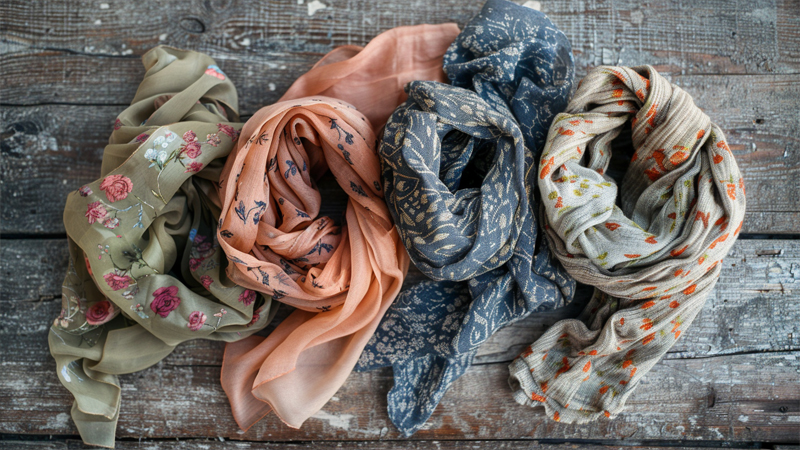
I’ve noticed a real difference in how I pick scarves depending on the time of year. In the heat of summer, for instance, I might reach for a breezy cotton or a sheer silk design in bright, lively colors. Think florals or pastels that reflect sunny vibes. I recall one summer afternoon at the beach where my light chiffon scarf protected my hair from salty winds and added a playful pop of color. It felt weightless and cool against my skin.
When autumn creeps in, I swap out those airy styles for warmer fabrics. A soft wool scarf in deep shades—maybe burgundy or forest green—can feel like a cozy hug on a crisp morning walk. By the time winter comes knocking, I’ve got thicker, heavier scarves that offer both coverage and serious insulation. Sometimes, I even layer a cotton under-scarf beneath a knitted one for extra warmth, especially when the wind chill feels biting. In spring, I love the pastel or floral prints, because they mirror all the fresh blooms and new beginnings around me.
Fabric and Print Choices by Season
| Season | Typical Fabrics |
|---|---|
| Spring | Light cotton, silk blends |
| Summer | Chiffon, breathable cotton |
| Autumn | Wool mixes, pashmina |
| Winter | Thick knits, cashmere |
That variety keeps things fun. I can’t tell you how many times I’ve reinvented a single outfit just by swapping out a scarf. And it’s not just about comfort. Seasonal designs resonate with our moods—vibrant patterns in summer, earthy tones in fall, and perhaps a splash of shimmer around the holidays. Embracing seasonal headscarves feels like a way to celebrate the changes around me, one wrap at a time.
How do you choose headscarves based on different occasions?
I match headscarves to the vibe: formal events call for luxurious textures7, while casual outings invite playful prints8 or lighter fabrics.
Opt for elegant scarves at special gatherings and relaxed designs for daily wear, balancing the setting and your personal flair.
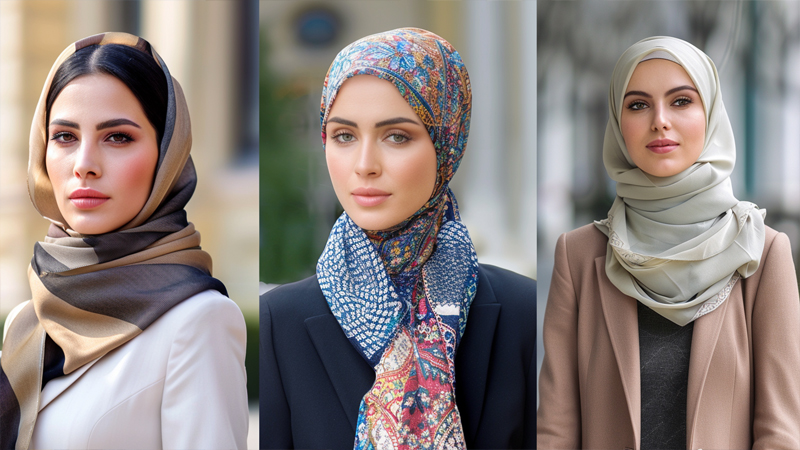
Let me start with a memory: I once wore a delicate, satin-finish scarf to a friend’s wedding, and it made me feel regal the entire night. The subtle sheen and gentle drape fit the occasion perfectly, making even my simple dress look more refined. When I attend formal gatherings—like weddings, galas, or holiday parties—I aim for scarves with rich colors or embellishments. Satin, silk, or even a bit of lace can add that extra spark.
For everyday errands or a laid-back meetup with friends, I switch to something more playful. Maybe it’s a bright cotton scarf with an abstract print or a soft jersey wrap I can tie quickly before running out the door. If I’m heading to a business meeting, though, I prefer a clean, minimal design—something that complements my outfit without stealing the spotlight. It feels like a subtle way of showing professionalism while still staying true to my style.
Occasion-Focused Choices
- Formal: Silk, satin, lace, or embellished pieces.
- Casual: Cotton, jersey, or fun patterns.
- Professional: Neutral tones, minimal prints.
Of course, cultural or religious events might require scarves that follow specific guidelines—like modesty in length or coverage, or certain colors that mark respect. In those cases, I try to incorporate elements that acknowledge tradition while reflecting my personal tastes. That might mean choosing a slightly longer scarf in a tasteful color, then adding a small decorative pin that resonates with me. Ultimately, I see scarves as a chance to show who I am, no matter the occasion. From a black-tie reception to a weekend stroll, the right choice sets the tone and helps me feel at ease in my own skin.
Conclusion
Headscarves give me both flair and function, fitting every season, occasion, and style I embrace.
-
Discover versatile styling techniques for square scarves to enhance your wardrobe with elegance and simplicity. ↩
-
Explore innovative wrapping methods for rectangular scarves to make bold fashion statements effortlessly. ↩
-
Discovering how to create unique styles with DIY wraps can unleash your creativity and allow for personalized fashion statements. ↩
-
Exploring the benefits of pre-tied scarves can help you understand their convenience and time-saving features, perfect for busy lifestyles. ↩
-
Learn how to select lightweight prints that keep you stylish and cool during the summer months. ↩
-
Find out which cozy textures will keep you warm and fashionable during the cooler months. ↩
-
Discover the top luxurious textures that elevate your formal event attire, ensuring you stand out with elegance and sophistication. ↩
-
Learn how to select playful prints that add a fun and vibrant touch to your casual outfits, perfect for everyday wear. ↩

